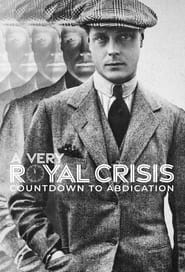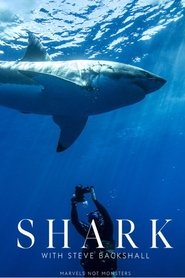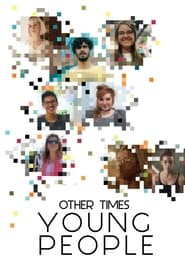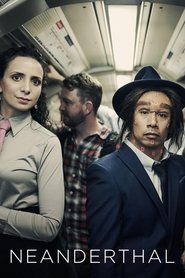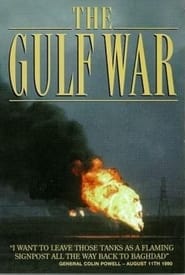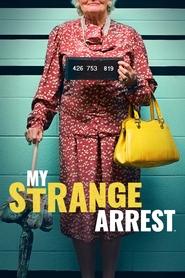Popular Documentary TV Series on Pantaflix - Page 441
-
Twisted Love
2020
Twisted Love
2020
star 1Follow investigators as they dissect complicated relationships between spouses, friends and family members to answer the question: Who felt a love so strong it drove them to kill? -
A Very Royal Crisis: Countdown to Abdication
2023
This is the true tale of the biggest scandal ever to engulf the British Royal Family – a forbidden love affair which had a devastating impact. This series recounts the story behind the ten days leading to Edward VIII abdicating his throne to marry American divorcee Wallis Simpson. It would change the royals, the press and British history forever. -
Journey of Life
2005
Journey of Life
2005
-
Doubutsu Sentai Zyuohger: Zyuoh Talks
2016
Blu-ray roundtable series featuring the cast of Zyuohger. -
Shark with Steve Backshall
2021
Shark with Steve Backshall is a revelatory series that celebrates the wonder of sharks and dispels the myth of sharks as cold blooded killers. Steve Backshall, a naturalist and shark expert, gets us closer to sharks, revealing a diverse and incredible family of over 400 different types. This global journey will travel from the freezing water of Alaska, to the tropics and down into the depths of our ocean. Teaming up with cutting edge scientists, Steve will make discoveries, from glow in the dark sharks, to sharks that walk on land, to ancient sharks over 500 years old. Now more than ever this incredible family needs our help. Every hour we lose over 11,000 sharks to overfishing, shark finning and habitat destruction. Steve will confront the uncomfortable truths and join shark advocates across the globe to help turn the tide for sharks. Coming eye to eye with this feared yet misunderstood predator, Steve will reveal sharks in a brand new light. -
Hornby: A Model World
2021
star 6.2Going behind the scenes with one of Britain's best loved model-making companies. Hornby opens its doors to reveal how their dedicated team of designers strive to shrink a new generation of mighty machines -
Other Times
2017
Other Times
2017
The documentary series makes an original and faithful portrayal of what it's like to age in Brazil today, in the first season. On the second season, the young people are explored, showing what they think and who they are. -
Robson's Extreme Fishing Challenge
2012
star 7Robson's Extreme Fishing Challenge is a factual entertainment show broadcast on Channel 5 and a spin-off series to Extreme Fishing with Robson Green. The show sees actor and fishing enthusiast Robson Green travel around the world to some of the greatest fishing destinations, where he challenges local masters of their craft over five rounds of competitive fishing. For both series, the show has aired Mondays at 9pm on Channel 5. -
Village United
2023
Village United
2023
star 10There are three points that define the life and values of the Greek countryside. The church, the cafe and the football field. Village United plows the Greek territory and monitors the village communities and their groups completely and... impeccably. We turn the camera to footballers who fight only for the applause and the honor of the village and the shirt. -
Gym Jong Kook
2021
-
Le boss des enchères
2015
Le boss des enchères
2015
Alain Brousseau is a legendary auctioneer in the Sherbrooke area. He is the reference when it comes to “emptying the place” and “clearing house.” He and his team travel all around Quebec to organize auctions. From inventory surplus to a store closure, from a succession to a farm equipment sale, Alain Brousseau will show up if there’s a good deal to be had. His mission: sell everything to the highest bidder. -
21 jours
2014
21 jours
2014
-
Neanderthals - Meet Your Ancestors
2018
star 4According to recent science the Neanderthals are not the knuckle-dragging apemen of popular imagination. In fact they are our distant ancestors. About 2% of the DNA of most people is of Neanderthal origin—and it continues to affect us today. Ella Al-Shamahi enlists the skills of Andy Serkis, the master of performance capture, and a group of experts to investigate Neanderthals. -
The Gulf War
1996
-
Sex Change Hospital
2007
Sex Change Hospital
2007
star 4Sex Change Hospital is an American six-part documentary series following trans men and women having genital reassignment surgeries. Dr. Marci Bowers performs the surgeries and calls upon her own experiences as a transgender woman to guide her patients as they go through the ultimate life changing procedure. -
My Strange Arrest
2023
My Strange Arrest
2023
star 6.4An in-depth look at the people who were arrested for allegedly committing some of the weirdest, wildest and most bizarre crimes ever, digging beyond the headlines and the viral videos to take a look at the incidents and consequences, hearing the stories from the accused, the arresting officers and eye witnesses. These are bizarre crimes with real-life ramifications. -
Rogue Trip
2020
Rogue Trip
2020
star 6.5ABC News Correspondent Bob Woodruff and his 28-year-old son Mack Woodruff take viewers on a father-son adventure to some of the world’s most unexpected places – roguish nations and territories mostly known for conflict, but each possessing a unique power to surprise, amaze and inspire. -
A Life in Ten Pictures
2021
star 8Extraordinary lives revealed through a handful of images - both famous and private - and by those who knew them best. -
大美青海
2011
大美青海
2011
 Netflix
Netflix
 Amazon Prime Video
Amazon Prime Video
 Apple iTunes
Apple iTunes
 Apple TV Plus
Apple TV Plus
 Disney Plus
Disney Plus
 Google Play Movies
Google Play Movies
 Paramount Plus
Paramount Plus
 Hulu
Hulu
 HBO Max
HBO Max
 YouTube
YouTube
 fuboTV
fuboTV
 Peacock
Peacock
 Peacock Premium
Peacock Premium
 Amazon Video
Amazon Video
 The Roku Channel
The Roku Channel
 AMC+
AMC+
 Kocowa
Kocowa
 Hoopla
Hoopla
 The CW
The CW
 Vudu
Vudu
 Starz
Starz
 Showtime
Showtime
 PBS
PBS
 Pantaflix
Pantaflix
 FXNow
FXNow
 Tubi TV
Tubi TV
 Kanopy
Kanopy
 Comedy Central
Comedy Central
 Crunchyroll
Crunchyroll
 Microsoft Store
Microsoft Store
 Redbox
Redbox
 Sun Nxt
Sun Nxt
 ABC
ABC
 DIRECTV
DIRECTV
 Crackle
Crackle
 Fandor
Fandor
 Plex
Plex

